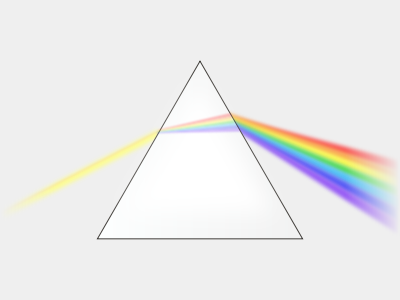What is Dispersion in Gemstones?

Suidroot, CC BY-SA 4.0, via Wikimedia Commons
Dispersion occurs when white light enters a gemstone and then scatters into rainbow-colored light. Diamonds are known for having good dispersion, as well as sphalerite, tanzanite, zircon, and moissanite. The density of a stone can affect its level of dispersion, as well as its color and refractive index.
Dispersion vs Fire
Some use dispersion and fire interchangeably although this isn’t entirely correct. Dispersion is what physically happens when light inside of the stone disperses. Fire is something that we perceive and see with our eyes and minds that is caused by dispersion.
How is Dispersion Calculated?
Calculating dispersion can help gemologists identify certain gemstones. Gemologists use a tool called a refractometer to help them calculate a stone’s dispersion. They calculate the difference between the refractive indexes of the red and violet light waves.
Stones with higher dispersion values produce more colorful flashes of light. So, for example, a stone with a dispersion value of 0.104 (like moissanite) will give off more rainbow-colored flashes than a stone with a dispersion value of 0.044 (like a diamond).
Dispersion Ratings
Not Observable
Stones with a dispersion rate under 0.017 do not have observable dispersion. An example of this is quartz, which has a dispersion rate of 0.013, or topaz, which has a dispersion rate of 0.014.
Moderate
Stones with moderate dispersion have a dispersion rating of 0.017 to 0.050. An example of stones with moderate dispersion includes diamonds (0.044) and spinel (0.020).
Strong
Stones with strong dispersion have a dispersion rating of 0.051-0.071. An example of stones with strong dispersion includes sphene and demantoid garnet.
Very Strong
Stones with very strong dispersion have a dispersion rating that is greater than 0.071. Examples of stones with very strong dispersion include sphalerite and moissanite.
Are you looking for the perfect diamond? Browse our inventory of over 100,000 diamonds today!



